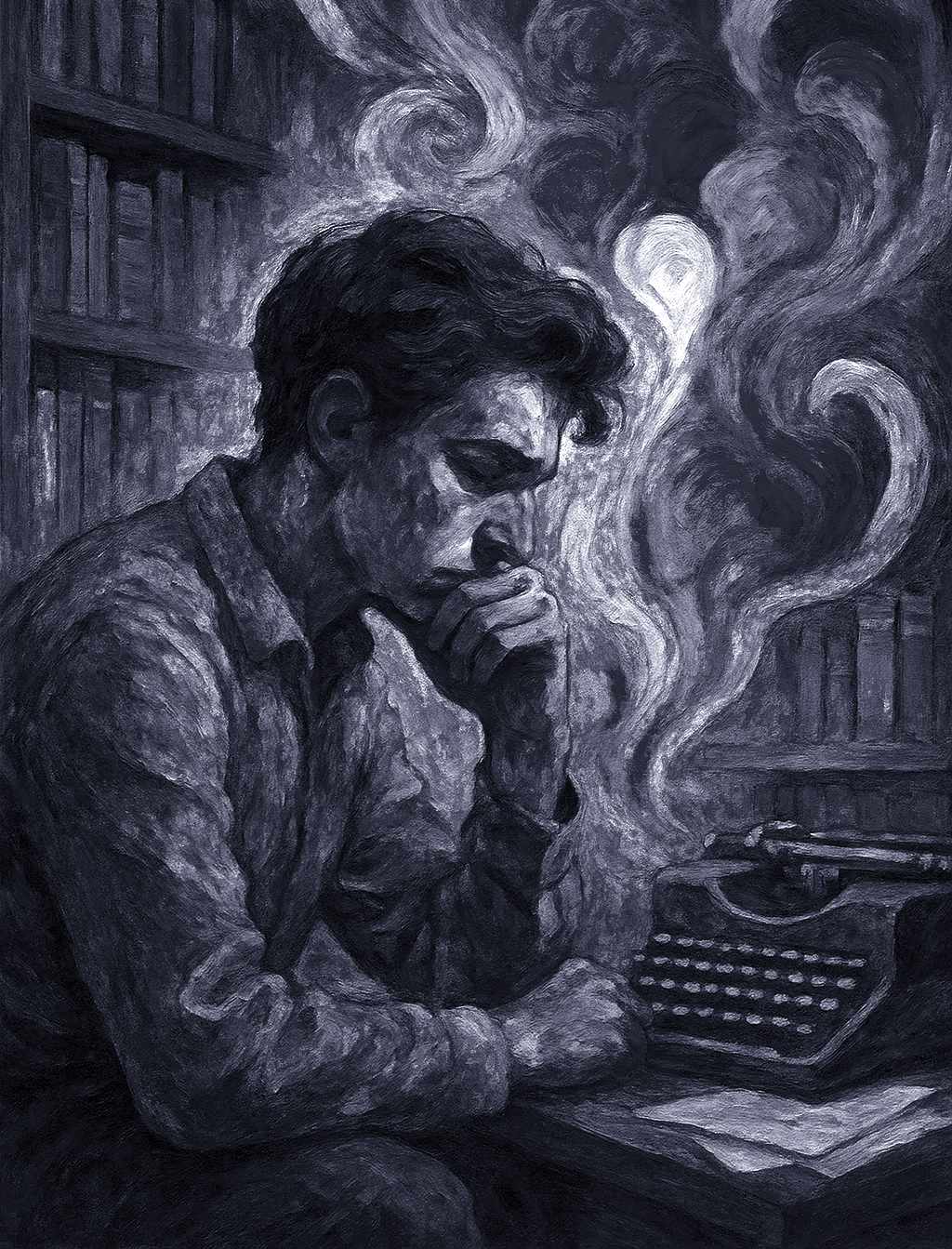In most genre fiction, the organization of events is the primary determinant of thematic significance: a decision leads to conflict, a discovery changes what came before. The structure holds because each event pushes toward a resolution. But there are stories where resolution is beside the point. What matters is the movement of thought, not action—the slow turn of perception, the pressure of doubt, the return of a private memory.
This mode of fiction is known as psychological realism. It treats inner life not as a series of actions but as a structure. A character’s identity emerges from the inner workings of the mind when in doubt, establishing identity beyond desires or physical performance. These narratives follow the shifts that occur before action—moments when judgment is suspended, when a scene is held in the mind longer than it lasts on the page. The story advances via the character’s effort to comprehend events, placing significance on interpretation over occurrence.
Writers in this mode construct their scenes based on mental processes. They show how a character turns an idea over before speaking or replays a conversation without achieving finality. A moment takes longer on the page because the character is still trying to understand what it means. This article examines how psychological realism works on the page—how it builds character, alters structure, and creates fiction defined by the texture of thought instead of the mechanics of the plot.
The Logic of Psychological Realism
Psychological realism is a mode of fiction that focuses on how people think. It does not aim to produce dramatic events or startling outcomes. It builds implication through the internal process of sense-making, momentary doubt, and private reasoning. The focus stays on thought as it unfolds: how a character understands a situation, tests a final judgment, or backs away without deciding.
The term is sometimes confused with “psychological fiction” more broadly, which may include thrillers, case studies, or emotionally charged narratives. Psychological realism, by contrast, has a narrower focus. It studies how the mind responds under pressure, particularly when its ultimate judgments have not yet been realized. The truth of the narrative rests upon the credibility of the internal thought process, surpassing the importance of accurate setting or circumstance.
Writers associated with this mode—such as Henry James, Fyodor Dostoevsky, and Virginia Woolf—often structure their novels around doubt, contradiction, and delayed judgment. Their characters weigh decisions without landing on them, reflect on moments they cannot resolve, or revise their understanding as they move through time. The form adapts to this uncertainty. Scenes may compress or expand depending on how long the character remains mentally engaged.
Psychological realism in fiction treats the inner life as both a subject and a structure. It offers no fixed rules, only a sustained attention to the mind at work.
Building Character’s Interior Architecture
In psychological realism, character is not defined by behavior, occupation, or role in the plot. Character identity emerges gradually, established through patterns of thought and shifts in perception. The reader does not learn who a character is by watching what they do but by following how they think through what happens to them.
Psychological realism often reduces the role of external events and builds scenes around mental activity. What drives the narrative is not what happens, it is how a character thinks about what has happened. A scene may focus on a comparison the character draws, a feeling they cannot name, or a conclusion they struggle to reach. These moments are central to the novel’s architecture and determine the way its significance develops.
Psychological realism shifts emphasis away from external turning points. Events occur, but they do not determine the novel’s course of action. What matters is how those events are processed and how the character internally evaluates them. This does not slow the novel down but redirects its energy inward.
Examples of Interior Construction
Below are three examples of how psychological realism creates structure based on the internal mental process of the character instead of the external development of events. What holds these novels together derives from the gradual construction of thought, surpassing the importance of external action.
Clarissa Dalloway in Mrs. Dalloway (1925) by Virginia Woolf
Clarissa’s walk through London functions to stitch together time, extending beyond a simple journey toward an external goal. Her present-day observations trigger sudden shifts into memory, where thoughts of youth, friendship, and lost possibility interrupt the continuity of the moment.
The novel makes no formal distinction between what is happening outside her and what is unfolding internally. Her thoughts invade the present with scenes from the past, and no distinction is made between the physical route and the mental one. Her mind selects, reiterates, reconsiders—and that pattern becomes the actual structure of the book.
Stevens in The Remains of the Day (1989) by Kazuo Ishiguro
Stevens narrates his own story while recalling past events that never fully achieve finality in his mind. His recollections emerge gradually, serving to postpone confrontation with his past, rather than achieving reconciliation. He revisits key moments in his life, triggered by the surface details of an uneventful road trip across the English countryside, without reaching a final grasp of the situation.
But the real subject of the novel is the gap between what Stevens says and what he avoids. Psychological realism works here through omission, restraint, and misdirection, where the emotional center of the novel lies in what continues to be unexpressed.
Faye in Outline (2014) by Rachel Cusk
Faye rarely discloses her own thoughts directly. The novel is composed almost entirely of the voices of others—people she meets while teaching a writing course in Athens—yet each conversation reveals something about the way she listens, withholds, or redirects. She listens closely but offers little exchange, and the novel builds its form around the conversations she absorbs.
Faye’s interior life is revealed through selective omission, rather than extensive introspection. Her perspective is made visible in what she allows others to express, what she avoids questioning, and how she frames each interaction. Her internal presence is defined by restraint and this subtle filtering. Psychological realism is achieved here by the absolute control of the narration, where what is withheld becomes the entire structure of the story.
The Private Drama of the Inner Life
Psychological realism creates tension without relying on dramatic incidents. The pressure arises from internal conflict, featuring contradictory motives, deferred decisions, and thoughts that stand unresolved. The significance of a scene is dictated by the lingering ambiguity, rather than by external shifts. The uncertainty may be emotional, moral, or perceptual, and it can persist without being brought to a conclusion.
This ambiguity does not weaken the story structure; rather, it defines its contours. The drama lies in how a character navigates feelings they cannot define or explain. They may withhold judgment, revisit the same concern with altered emphasis, or shift between conflicting interpretations. These movements are not background to the plot because they are what holds it in place.
Form as Reflection of Thought
Psychological realism requires a narrative form that can reflect the irregular movement of thought. Traditional plot structure, with its fixed arc of rising action and climax, frequently cannot accommodate the pauses, reversals, or internal conflicts that define the interior life.
When the focus shifts inward, the structure must shift with it. This often involves techniques such as interior monologue, shifts in chronology, or fragmented scenes. These are not stylistic flourishes but structural responses to a particular kind of narrative demand: how to represent thinking as it happens, especially when it leads nowhere definitive.
The structure of the novel in this fashion follows the rhythm of the mind. A moment may stretch across several pages if the character stays absorbed in it; time may accelerate or vanish when inner attention fades; chapters may be organized by recurring thought, inner struggle, or emotional tension, instead of driven by event. In psychological realism, form originates from the character’s ongoing attempt to create meaning, with little reliance on external imposition.
Why Psychological Realism Still Matters
Psychological realism is not simply a slower form of storytelling. It is a method of holding a thought in view before it becomes fixed. The novel provides a record of attention that avoids immediate settlement, taking the place of mere plot progression. This makes it easy to underestimate. Fiction of this kind can appear minimal or static when, in fact, it requires a high degree of formal control. The core thematic import often resides in what the narrative refuses to reach closure on.
At a time when much writing aims for immediacy, psychological realism offers another set of values: precision, persistence, and the capacity to stay with an idea long enough for its structure to change. It avoids being nostalgic or ornamental. It responds to a different kind of difficulty: the challenge of representing the mind as something in motion, under pressure, and still undecided, going beyond the portrayal of a solved equation.
Interior Life as Literary Responsibility
In a culture that favors speed, certainty, and outward display, psychological realism affirms the complexity of what unfolds internally. It insists that thought, with its contradictions, revisions, and delays, remains a legitimate foundation for fiction. This is not only an aesthetic choice but also a way of treating characters—and by extension readers—with seriousness.
Such fiction sharpens attention but also preserves what might otherwise remain unstated: private reasoning, withheld emotion, and moments of moral or perceptual uncertainty. Psychological realism offers the means to sustain ambiguity and to follow a decision before it solidifies, treating interior life as a subject significant enough to structure a story around.
Further Reading
Narratives of the Mind: Where Literature Meets Psychology by Psychologs
Narrative Perspective and Psychological Realism: On Henry James’s Theory of the Novel by garciala.blogia.com
Psychological Realism vs Social Realism: A Literary Deep Dive by Literary Devices




